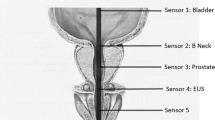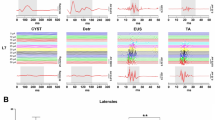Abstract
Study design: Retrospective audit and interview-based study of a traumatic spinal cord injured cohort, assessing the incidence and risk of epididymo-orchitis (E-O).
Objectives: Assess the potential risk factors for E-O in this cohort (spinal cord injured patients).
Setting: Janbazan Clinic for Spinal Cord Injuries, Mashad, Iran.
Methods: A retrospective notes audit of 169 male traumatic spinal cord injured (SCI) patients was performed. In addition, interviews were performed to confirm any equivocal data. The following risk factors were assessed: history of recurrent urinary tract infections (UTIs), urethral stricture, urethral diverticuli, urinary fistula, urinary calculi, spinal injury type, neurogenic bladder type, autonomic dysreflexia, vesico-ureteral reflux, sphincterotomy, vasectomy, marriage status, bladder residual and emptying method, ejaculation, spinal injury level, micturation control, and muscular spasm, which included detrusor, external sphincter or lower limb spasm.
Results: A total of 65 patients from our group (38.5%) had suffered E-O at least once. E-O presented on average, 3.9 years after the SCI. Patients with a history of muscular spasm appeared less likely to develop E-O (P<0.05). None of the vasectomised patients developed E-O. The relation between all the other factors and E-O were not significant.
Conclusions: Our study has shown that the presence of muscular spasm decreases the risk of E-O, although the mechanism remains unclear. Surprisingly, the other historical risk factors showed no clear relation with E-O occurrence.
Similar content being viewed by others
Log in or create a free account to read this content
Gain free access to this article, as well as selected content from this journal and more on nature.com
or
References
Hackler RH . A 25 year prospective mortality study in the spinal cord injured patient: comparison with the long-term living paraplegic. J Urol 1977; 117: 486.
Lapides J, Diokno AC, Sherman JS, Lowe BS . Clean intermittent self-catheterization in the treatment of urinary tract disease. J Urol 1972; 107: 458–461.
Allas T et al. Spermograms and epididymitis in paraplegic patients managed by chronic self-catheterisation. Ann Readapt Med Phys 1991; 34: 37–40.
Luzzi GA, Brien TS . Acute epididymitis. BJU Int 2001; 87: 747–755.
Thind P, Gerstenberg TC, Bilde T . Is micturation disorder a pathogenic factor in acute epididymitis? An evaluation of simultaneous bladder pressure and urine flow in men with previous acute epididymitis. J Urol 1990; 143: 323–325.
Juma S, Mostafavi M, Joseph A . Sphincterotomy: long-term complications and warning signs. Neurol Urodyn 1995; 14: 33–41.
Hoppner W, Strohmeyer T, Hartmann Lopez-Gamarra D, Dreikorn K . Surgical treatment of acute epididymitis and its underlying diseases. Eur Urol 1992; 22: 218–221.
Mittemeyer BT, Lennox KW, Broski AA . Epididymitis: a review of 610 cases. J Urol 1996; 95: 390–392.
Maynard FM et al. International standards for neurological and functional classification of spinal cord injury. Spinal Cord 1997; 35: 266–274.
Thind P, Brandi B, Kristensen JK . Assessment of voiding dysfunction in men with acute epididymitis. Urol Int 1992; 48: 320–322.
Bors E, Comarr AE . Neurological Urology. University Park Press: Baltimore, 1971, pp. 344–345.
Maynard FM, Glass J . Management of the neuropathic bladder by clean intermittent catheterisation: 5 years outcomes. Paraplegia 1987; 25: 106–110.
Perkash I, Giroux J . Clean intermittent catheterisation in spinal cord injury patients: a follow up study. J Urol 1993; 149: 1068–1071.
Wyndaele JJ, Maes D . Clean intermittent self-catheteri-sation: a 12 year follow up. J Urol 1990; 143: 906–908.
Perrouin-Verbe B et al. Clean intermittent catheterisation from the acute period in spinal cord injury patients. Long term evaluation of urethral and genital tolerance. Paraplegia 1995; 33: 619–624.
Berger RE et al. Chlamydia trachomatis as a cause of acute ‘idiopathic’ epididymitis. N Eng J Med 1978; 298: 301–304.
Herwing KR, Lapides J, MacLean TA . Response of acute epididymitis to oxyphenbutazone. J Urol 1971; 106: 90–891.
Dewire DM et al. A comparison of the urological complications associated with long-term management of quadriplegics with and without chronic indwelling urinary catheters. J Urol 1992; 147: 1069–1071; discussion 1071–1072.
Back DA, Taylor DE . Post-prostatectomy epididymitis: a bacteriological and clinical survey. J Urol 1970; 104: 143–145.
Acknowledgements
We thank the following medical statisticians, Mr David Bowers and Mr John Warlow, from the Universities of Leeds and Huddersfield, respectively, for their contributions to this study.
Author information
Authors and Affiliations
Rights and permissions
About this article
Cite this article
Mirsadraee, S., Mahdavi, R., Moghadam, H. et al. Epididymo-orchitis risk factors in traumatic spinal cord injured patients. Spinal Cord 41, 516–520 (2003). https://doi.org/10.1038/sj.sc.3101491
Published:
Issue date:
DOI: https://doi.org/10.1038/sj.sc.3101491
Keywords
This article is cited by
-
Organ-preserving treatment of an epididymal abscess in a patient with spinal cord injury
Spinal Cord (2014)
-
Should sperm be cryopreserved after spinal cord injury?
Basic and Clinical Andrology (2013)
-
Influence of bladder management on epididymo-orchitis in patients with spinal cord injury: clean intermittent catheterization is a risk factor for epididymo-orchitis
Spinal Cord (2006)



